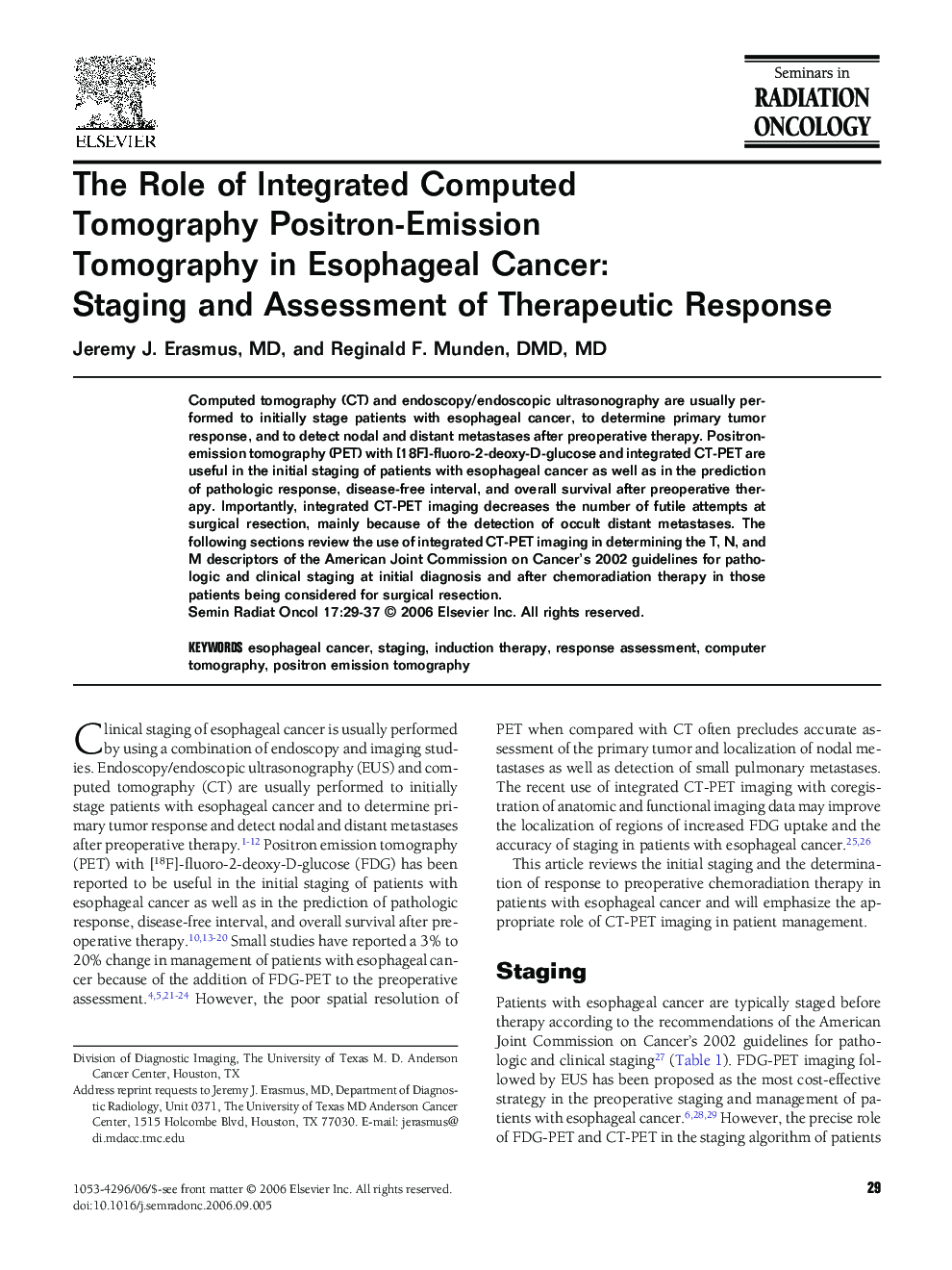| Article ID | Journal | Published Year | Pages | File Type |
|---|---|---|---|---|
| 2735908 | Seminars in Radiation Oncology | 2007 | 9 Pages |
Computed tomography (CT) and endoscopy/endoscopic ultrasonography are usually performed to initially stage patients with esophageal cancer, to determine primary tumor response, and to detect nodal and distant metastases after preoperative therapy. Positron-emission tomography (PET) with [18F]-fluoro-2-deoxy-D-glucose and integrated CT-PET are useful in the initial staging of patients with esophageal cancer as well as in the prediction of pathologic response, disease-free interval, and overall survival after preoperative therapy. Importantly, integrated CT-PET imaging decreases the number of futile attempts at surgical resection, mainly because of the detection of occult distant metastases. The following sections review the use of integrated CT-PET imaging in determining the T, N, and M descriptors of the American Joint Commission on Cancer’s 2002 guidelines for pathologic and clinical staging at initial diagnosis and after chemoradiation therapy in those patients being considered for surgical resection.
